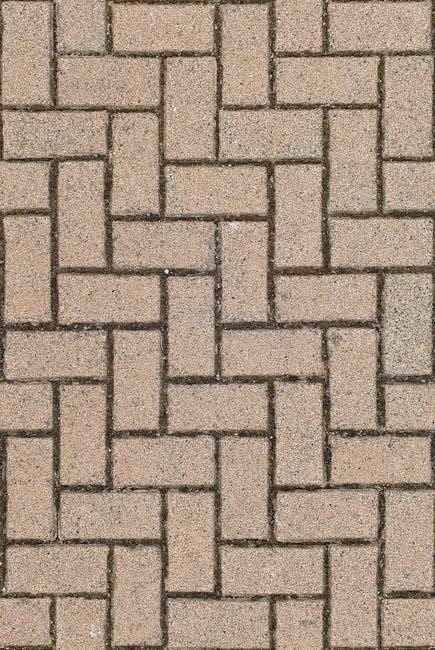ICT Order Blocks are key price levels where institutional traders place significant buy or sell orders, indicating potential market reversals or continuations. They help traders identify areas of institutional activity, enabling smarter trading decisions based on market psychology and order flow analysis.
Definition and Overview
ICT Order Blocks, developed by Michael Huddleston, are specific price zones where institutional traders execute significant buy or sell orders. These blocks are identified by distinct candlestick patterns, such as a strong upward move following a down candle, indicating accumulation by smart money. They serve as key levels of support or resistance, signaling potential market reversals or continuations. ICT Order Blocks are central to the Smart Money Concept (SMC) methodology, helping traders identify areas of institutional activity and make informed decisions based on market psychology and order flow analysis.

Types of ICT Order Blocks

ICT Order Blocks are categorized into Bullish and Bearish blocks. Bullish blocks form after down candles with strong upward moves, indicating accumulation. Bearish blocks signal distribution before sharp declines.

Bullish Order Blocks
A Bullish Order Block forms when a down candle or series of down candles is followed by a strong upward move. This structure indicates that smart money has accumulated long positions during the consolidation phase, creating a strong buying zone. The block acts as a support level, where price often retests after the initial rally. Institutional traders use these zones to hedge and push the price higher, making them high-probability areas for buy entries in an uptrend. Recognizing these blocks helps traders align with institutional activity and improve their market analysis.
Bearish Order Blocks
A Bearish Order Block is identified by an up-closing candle (often green) just before a sharp price drop. This structure signals where big sellers entered the market, taking control and driving the price downward. The block acts as a resistance level, indicating a potential downtrend or reversal. Institutional traders use these zones to hedge and push the price lower, making them key areas for sell entries in a bearish market. Recognizing these blocks helps traders identify areas of institutional selling activity, enhancing their ability to anticipate and trade market corrections effectively.

ICT Order Block Indicator
The ICT Order Block Indicator highlights significant price levels where institutional traders likely place orders, based on the Smart Money Concept (SMC) by Michael Huddleston.
How the Indicator Works
The ICT Order Block Indicator identifies key price zones where institutional traders place significant buy or sell orders. It works by analyzing specific patterns, such as the overlap of candlesticks at critical price levels, to detect areas of institutional interest. These zones often indicate potential market reversals or continuations. The indicator highlights these areas, allowing traders to anticipate where price may react due to institutional activity. It integrates with concepts like Fair Value Gaps (FVG) to provide a comprehensive view of market dynamics and institutional order flow.
Key Features and Benefits
The ICT Order Block Indicator offers several key features, including highlighting significant price levels where institutional orders are placed. It identifies both bullish and bearish order blocks, providing insights into market psychology. The indicator benefits traders by revealing potential reversal or continuation zones, helping them align with institutional activity. Additionally, it integrates with concepts like Fair Value Gaps (FVG) and liquidity pools, enhancing trading strategies. This tool is particularly useful for identifying high-probability trading opportunities and optimizing entry and exit points based on institutional order flow analysis.
Smart Money Concept (SMC) Methodology
The Smart Money Concept developed by Michael Huddleston focuses on identifying institutional trading patterns, helping traders understand how professionals execute orders and manipulate market psychology for profitable opportunities.
Role of Order Blocks in SMC
In the Smart Money Concept (SMC), Order Blocks play a crucial role by identifying areas where institutional traders execute significant buy or sell orders. These blocks act as key price levels, often serving as support or resistance zones. They reveal where smart money has accumulated or distributed positions, helping traders understand market psychology and institutional manipulation tactics. By analyzing Order Blocks, traders can identify potential market reversals or continuations, aligning their strategies with institutional activity. This approach focuses on high-probability trading opportunities by leveraging the footprints left by large players in the market.

Breaker Blocks: Key Concept
Breaker Blocks are critical components in identifying market direction and liquidity testing. They often appear after an Order Block, validating its strength or weakness. A Breaker Block forms when price tests a key level, triggering stop losses or attracting liquidity. This concept highlights institutional strategies to manipulate price action, creating false breakouts to trap retail traders. By analyzing Breaker Blocks, traders can identify whether an Order Block will hold or fail, providing insights into market sentiment and institutional intent. This dynamic interaction between Order Blocks and Breaker Blocks is essential for high-probability trading decisions.

Identifying ICT Order Blocks on Charts
Identify ICT Order Blocks by locating overlapping candlestick patterns at key price levels, indicating institutional activity. Use visual techniques and indicators to spot these zones accurately.
Visual Recognition Techniques
Recognizing ICT Order Blocks visually involves identifying overlapping candlestick patterns at key price levels. Traders look for areas where price consolidates before a strong move, often marked by a series of down or up candles preceding a reversal. These zones are typically highlighted by specific indicators or scripts that outline the blocks, making them easier to spot. Additionally, focusing on high-timeframe charts, such as the 4H or daily, helps in accurately identifying these institutional accumulation or distribution areas. By mastering these techniques, traders can better align their strategies with market psychology and institutional activity.
Examples of Order Block Formation
Order blocks often form in areas of consolidation before a strong price move. A bullish order block may appear after a series of down candles, followed by a sharp upward move, indicating institutional buying. Conversely, a bearish order block forms when a sharp price drop follows an up-closing candle, signaling institutional selling. These blocks are frequently identified at key price levels, such as swing highs or lows, and are often accompanied by fair value gaps or liquidity pools. Real-world examples include bullish blocks forming before rallies and bearish blocks preceding market drops, helping traders align with institutional flows.

Trading Strategies Using ICT Order Blocks
ICT Order Blocks help identify high-probability trades by highlighting institutional activity. Traders use these blocks to pinpoint entry and exit points, aligning with smart money flows.
Entry and Exit Points
ICT Order Blocks provide clear entry and exit points by identifying areas where institutional traders have placed significant orders. Traders enter long when price retests a bullish order block, signaling buying interest, and exit when the block is breached. Conversely, short positions are taken when price retests a bearish order block, indicating selling pressure, with exits planned if the block fails. These levels act as support or resistance, guiding traders to align with institutional flow and optimize their strategies for better risk-reward outcomes in various market conditions.
Risk Management Tips
When trading with ICT Order Blocks, risk management is crucial. Place stop-loss orders outside the order block to avoid being stopped out by institutional stop hunts. Avoid setting stops at obvious levels where retail traders cluster, as institutions often target these areas. Use wider stops during high volatility and ensure trades align with the broader market trend. Validate entries with confirmation signals, such as a strong candle close within the block, to reduce false breakouts. Managing risk effectively ensures longevity in trading by protecting capital and optimizing returns in volatile markets.
ICT Order Blocks are powerful tools for identifying institutional activity, helping traders anticipate reversals or continuations. They enhance trading strategies by highlighting key price levels where smart money operates.
ICT Order Blocks are essential for identifying institutional activity and market psychology. They highlight key price levels where smart money places significant buy or sell orders. These blocks indicate potential reversals or continuations, helping traders align their strategies with institutional actions. By analyzing order flow and liquidity pools, ICT Order Blocks provide insights into market structure and high-probability trading opportunities. Understanding these concepts enhances trading accuracy and effectiveness, making them a valuable tool for both novice and experienced traders aiming to follow institutional footprints.
Final Thoughts on ICT Order Blocks

ICT Order Blocks offer a powerful framework for understanding institutional trading behaviors and market dynamics. By identifying these key price levels, traders can gain insights into potential market movements and make informed decisions. The ability to recognize order blocks and breaker blocks enhances trading strategies, allowing for alignment with smart money activities. While no method guarantees success, integrating ICT Order Blocks into analysis provides a structured approach to navigating market volatility and identifying high-probability trading opportunities.
